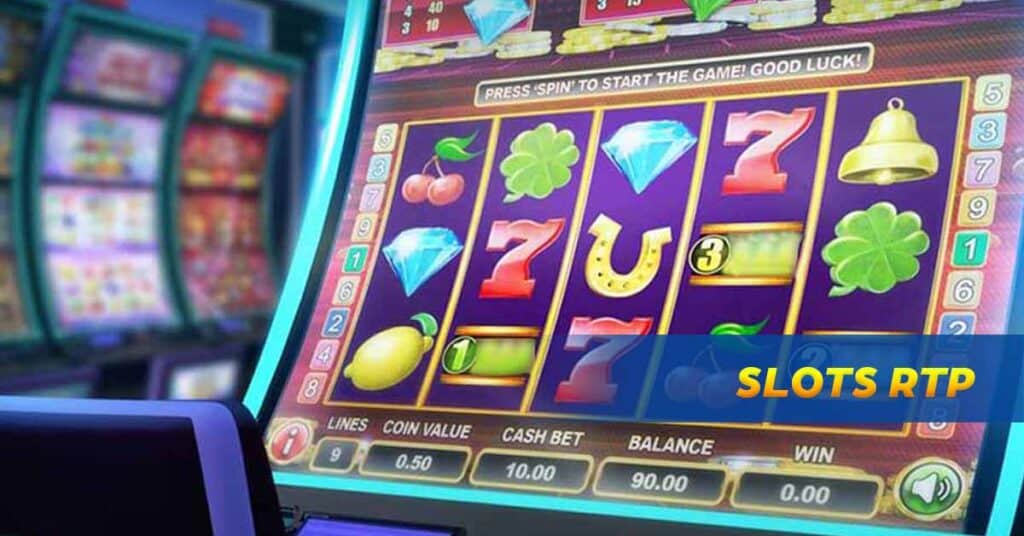Slots RTP Explained in Online Casinos
Slot machines have long been a fixture in casinos and other gambling establishments. The opportunity to win significant jackpots makes them entertaining to play. Slot players frequently overlook the importance of the RTP or Return to Player figure. This article will define RTP, describe how it operates, and discuss its significance for both bettors and casinos.

What is Slots RTP?
Return to Player, or RTP, is a percentage that represents the typical sum of money percentage that a slot game pays out to bettors over its lifetime. For instance, if a slot machine’s RTP is 95%, players may typically anticipate winning ₱95 out of every ₱100 they stake.

How RTP is Calculated
The formula for calculating slots RTP involves comparing the total amount of money wagered to the total amount paid out as winnings. While this calculation provides an overall picture, individual player experiences can vary significantly.

Below are examples of how to compute the Return to Player percentage:
RTP = (Total Amount Paid Out / Total Amount Wagered) x 100
For example, let’s say a slot machine has received ₱1,000,000 in wagers over a period and has paid out ₱950,000 in winnings during that same time. To calculate the RTP:
RTP = (₱950,000 / ₱1,000,000) x 100 = 95%
It means that, for every ₱100 wagered on this slot machine, players can expect to receive ₱95 in winnings over the long term. It’s important to remember that RTP is an average figure, and individual player experiences can vary widely.
How Does RTP Work in Online Casinos
The idea of RTP, which stands for “Return to Player,” is just as important in online casinos as it is in traditional ones. But RTP works a little differently in the world of online gaming in some ways.

Digital Gameplay and Transparency
There are a lot of different slot games at online casinos, and each one has its own slots RTP number. These numbers are usually easy for players to find, so they can choose which games to play based on what they know. This makes it easier to trust and gives players the freedom to choose games that match their tastes and strategies.
Calculations in Real Time
Slots RTP is calculated instantly and digitally in online games. Random Number Generators (RNGs) are used by advanced software to make sure that the result of each spin is fair and can’t be changed or manipulated.
Game Selection and Customization
Online platforms usually have a wide range of games with different RTP rates and levels of risk. Players can choose from different choices based on how they like to play and what they want to achieve. Because there are so many games to choose from, gamers can switch between games with different RTPs to increase their chances of winning.
Importance of RTP
The importance of slots RTP, or Return to Player, cannot be overstated in the world of slot machines. It holds significance from both the player’s perspective and the casino’s standpoint.

For Players:
Understanding the slots RTP of online games is crucial for bettors who want to make informed decisions about where to wager their money. Slots with higher RTP percentages offer better odds of receiving returns over the long term. This knowledge empowers players to choose games that align with their preferences and strategies, ensuring a more satisfying and potentially rewarding gaming experience.
For Casinos:
Casino operators also recognize the pivotal role of slots RTP. Games with higher RTP percentages tend to keep players engaged for longer durations, contributing to a positive player experience. This engagement can translate into repeat visits and increased loyalty among players. Furthermore, emphasizing transparency in RTP percentages helps casinos establish trust with their patrons, fostering a reputation for fairness and integrity.
In essence, the importance of RTP extends beyond mere numbers on a screen. It impacts the decisions players make, the enjoyment they derive, and the trust they place in the casinos they frequent. The quest for balance between player satisfaction and casino profitability is at the heart of understanding and appreciating the significance of RTP.
Impact of RTP on Player Experience
The impact of slots RTP, or Return to Player, on the player experience, is profound and far-reaching. RTP serves as a crucial factor that can influence how players perceive and engage with slot machines in both online and land-based casinos.

Enhanced Confidence and Informed Choices:
Understanding the RTP of a slot game provides players with a sense of confidence and control. When players know that a game offers a higher RTP, they can approach it with the assurance that they have a better chance of receiving returns on their wagers over time. This knowledge empowers players to make informed choices, picking games that align with their preferences and risk tolerance.
Extended Gameplay and Satisfaction:
Higher slots RTP percentages contribute to extended gameplay sessions. Bettors are more likely to continue playing a slot that offers reasonable returns, as it provides a more satisfying experience. This extended engagement can lead to more enjoyable sessions, especially for players who prefer longer playtimes.
Managing Expectations and Volatility:
Slots RTP also plays a role in managing player expectations and volatility. Slots with lower volatility and higher RTP tend to provide more frequent wins, offering a steady stream of smaller payouts. This can be appealing to players who prefer consistent, gradual returns. On the other hand, higher volatility slots with lower RTP might offer larger jackpots but fewer wins, attracting players who seek the thrill of chasing substantial rewards.
Building Trust and Loyalty:
Casinos that transparently provide accurate RTP information build trust with their player base. Players appreciate casinos that prioritize fair gameplay and uphold a commitment to transparency. As a result, players are more likely to return to casinos that offer a positive player experience and trustworthy practices, ultimately fostering loyalty and repeat visits.
RTP and Slot Volatility
The relationship between RTP (Return to Player) and slot volatility is a critical aspect of understanding how slot machines function and how players experience gameplay. Both RTP and volatility play distinct roles in shaping the overall dynamics of a slot game.
Volatility, also known as variance, refers to the risk and reward profile of a slot game. It categorizes games as either high, medium, or low volatility. High volatility slots have infrequent but potentially large payouts, whereas low volatility slots offer more frequent but smaller wins. Volatility directly affects the distribution of payouts and the overall gameplay experience.
The Interplay between RTP and Volatility:
The relationship between slots RTP and volatility is intricate. While they are distinct concepts, they can influence each other’s perceived impact on the player experience. Games with higher volatility often have larger potential slot jackpots, which can affect the overall RTP. For example, a high-volatility slot might have a lower base RTP but can lead to occasional substantial payouts that contribute to players’ overall returns.
Conversely, low-volatility games tend to have steadier gameplay with more frequent wins, aligning with the calculated RTP. These games might offer smaller individual wins but can provide a more consistent and less risky experience for players.
FAQs
Conclusion
In the world of slot machines, you need to know the return to player proportion (RTP) to open a secret treasure box. Slots RTP percentages that are clearer and higher are good for both the players and the casinos. This makes for a more enjoyable and possibly profitable gaming experience for everyone.














